McLaren is making the ultimate modern sports car - and its rivals should be worried
When it comes to modern British sports cars, models like the Lotus Exige or ...

... the Jaguar F-Type immediately come to mind.

When most think of McLaren, it's usually images of the company's legendary speed-demon F1 hypercar or...

... its Formula One team's 8 world championships and 182 race victories that appear first.
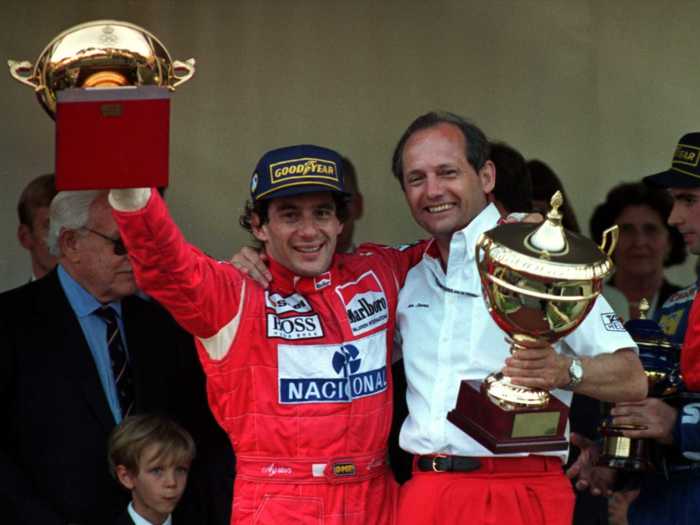
With the 570S, McLaren is trying to do something different.

Here is the McLaren 570S's dossier — 562-horsepower from a 3.8-liter, twin-turbocharged V8 engine; a manufacturer claimed top speed of 204 mph with a 0-60 time of around 3 seconds; carbon-fiber construction, and loads of Formula One-derived technology.

But if you ask McLaren, they'll tell you that the 570S is not a supercar. Even though it has the power, the speed, the looks, and the drama of a supercar, it's not. Instead, it's the company's interpretation of a modern sports car.

Up front, the 570S features the latest iteration of the design language first seen in the company's P1 hypercar, which made its debut in 2012.
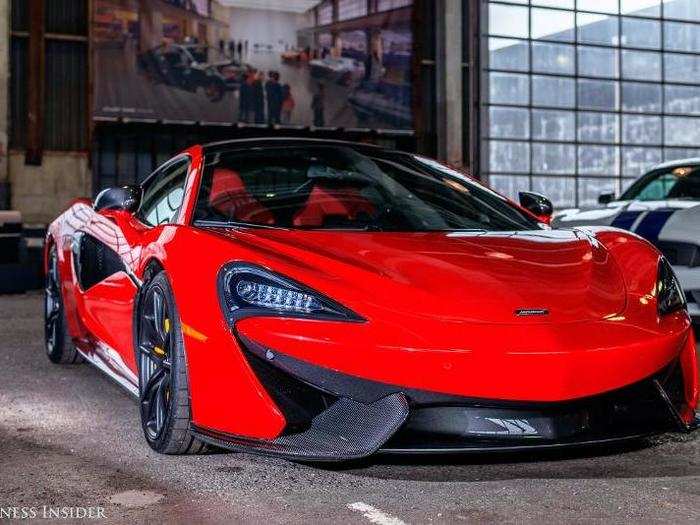
The 570S is equipped with both LED headlights and running lights.

The McLaren's side profile highlights the car's tear-drop shape and its diminutive size. At about 14.5 feet long, it's slightly smaller than a Toyota Prius.

The rear end of the 570S is dominated by its dual exhausts and a large rear diffuser.

Inside, the 570 is surprisingly spacious for a car of its size and mission. The interior of our test car featured black alcantara with red leather and carbon-fiber accents.

The sports seats are firm and supportive, but remain comfortable even on long drives.

Instead of a traditional instrument cluster, the driver is treated to a digital unit featuring a large 7-inch center screen flanked by two 3-inch screens.

The center screen displays road speed, engine RPM, gear selection, and the posted speed limit. The left screen displays the trip computer while the right screen displays the engine's operating temperature and the car's remaining range.

The center stack is dominated by a pair large air vents and a 7-inch infotainment touchscreen.

The tablet-like screen runs the latest version of McLaren's own IRIS infotainment system. Even though it offers improved speed and reliability over the systems we've experienced in older McLarens, its odd menu layout and unorthodox user interface make it confusing to use.

Although the map readout was crisp and informative, the car's navigation system struggled to comprehend the layout of the entrance to New York's Lincoln Tunnel.

The center console houses the car's ignition switch, push button gear selector, and dynamic drive mode selector.

Our test car came equipped with a 12-speaker, 1280-watt sound system designed for McLaren by Bowers & Wilkins.

Finally, McLaren has also corrected a major shortcoming with the interiors of its other vehicles — cup holders. The 570S has two of them and they are much easier to access than on previous test cars.

As the first car from McLaren's Sports Series to land on American shores. It also serves as the entry level model in the company's lineup.

If you want a supercar, McLaren will gladly sell you a 650S, or you can ...

... Find an owner willing to part with one of the sold-out limited edition 675LTs from the company's Super Series.
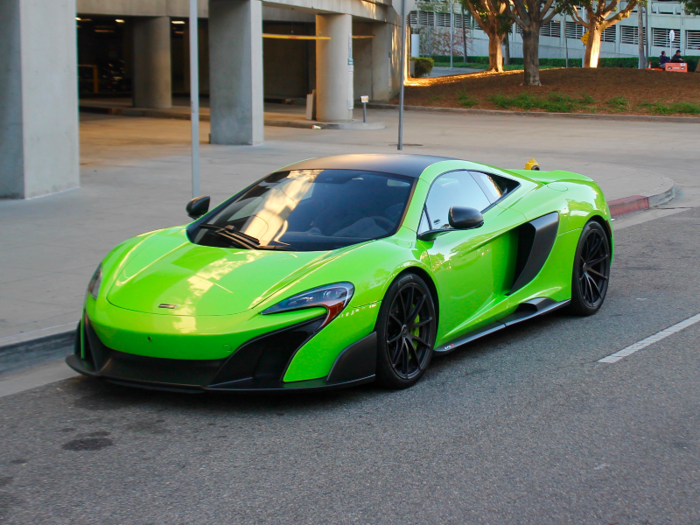
And then there's the P1 hybrid hypercar from McLaren's Ultimate Series. Unfortunately, all 375 have been sold. But if you've got a couple of million bucks burning a hole in your wallet, you can always keep an eye out for one at high-end auctions.

So what makes the 570S different from its supercar siblings? "Practicality and usability," McLaren chief designer Robert Melville told Business Insider at the car's New York auto show launch last March.
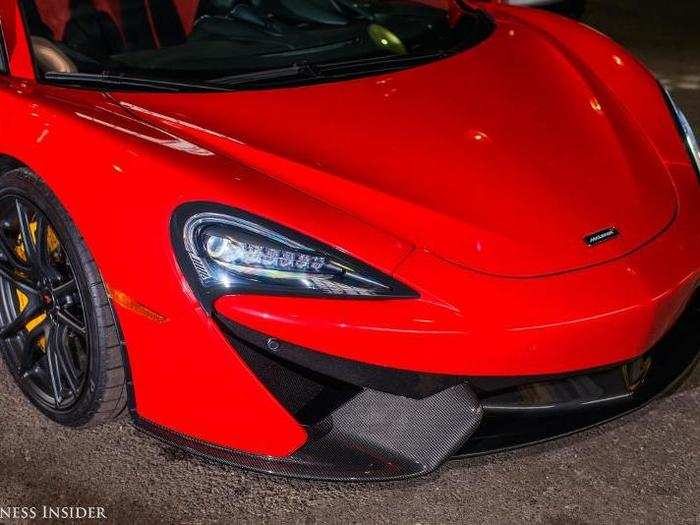
According to Melville, McLaren has modified its carbon-fiber MonoCell to make it easier to get in and out of the car. They've also designed the dihedral doors to open with a narrower foot print— allowing the car to fit into tighter parking spaces.

In addition, Melville said that the car's driving position has been designed to optimize the driver's view of the road and his or her ability to place the car in context with its surroundings. This makes the 570S easier to parallel park and reduces the likelihood of curbing its expensive wheels.

In the marketplace, the 570S competes against a bevy of highly capable and similarly priced rivals, such as the ...
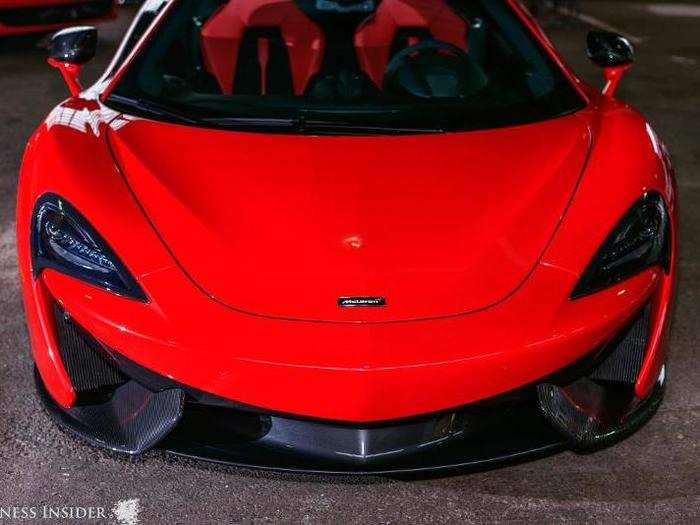
.... Audi R8 ...

.... High-end Porsche 911s, and ...

... The Acura NSX. This means that the 570S is facing down some serious and far more established players.

But the 570S is able to differentiate itself from its rivals because of where it sits in McLaren's product portfolio. While its competitors are usually their respective brands' flagship models, the 570S is an entry-level product. That means instead of sharing parts with lesser models, the 570 is derived from cars that cost twice to 5 times its asking price.

For instance, the 570S is powered by a detuned version of the same 3.8 liter, twin-turbocharged M838T V8 engine found in its big brother 650S and P1.

All of its buttons, switch gear, and carbon fiber work are of same quality as cars that leave McLaren's factory with million-dollar price tags.

And speaking of the factory. The 570S is hand-built alongside its more expensive siblings at the McLaren Production Center located on the grounds of the company's global headquarters in Woking, Surrey, England.

But the lower price tag does mean the 570S has to do without some of the go-fast goodies from which other McLarens benefit. Gone are McLaren's active aerodynamics and hydraulic Proactive suspension system.

In addition, the pricey carbon-fiber body panels have been replaced by more wallet-friendly aluminum ones.

To drive, the 570S is unlike any McLaren we've ever tested. Tipping the scales at just 2,934 lbs., the 570S feels like a stripped down, lightweight sports car but with its wheezy four-cylinder swapped out for a pair of solid-fuel rockets.

The 570S is a long strider. Although it has 562 ponies primed for action, it doesn't jump off the line like a manic animal. With just 3.8 liters of displacement, the bulk of the engine's power doesn't materialize until its turbos spool up. While it's only a momentary lag, it's perceptible from the driver's seat.

However, when the power does kick in, the speedometer reaches the speed limit very quickly. The 570S's 7-speed, dual clutch transmission works its way through the gears like a champ — without any hint of indecision. McLaren claims a 0-60 time of around 3.0 seconds. Although we didn't do scientific testing, we don't doubt these claims.

But the best feature of this car is its steering. The 570S's hydraulic steering system is an absolute triumph of engineering. It is one of, if not the most, precise and communicative steering system I've ever encountered. The amount feedback and information the steering provided was simply astonishing. I felt like I had my own personal JARVIS offering up helpful information through the steering wheel.

Without hydraulic suspension, the 570S loses the silky smooth ride that has become a trademark of McLaren supercars. However, the car's setup, featuring traditional anti-roll bars and active dampers, offers a more than acceptable level of civility in daily driving. At the same time, its suspension provides an ample amount of confidence-inducing grip when the motoring gets dynamic.

In the past, McLaren's cars have been criticized for being too quiet and a bit soulless. Well, with the sports exhausted turned up to 11, the 570S generates a tune that can compare with the best the Italians have to offer — although you do need to get used to the noise.

Even without the aid of an air brake, the McLaren's carbon ceramic brakes were more than up to the challenge when it came time to shed speed.
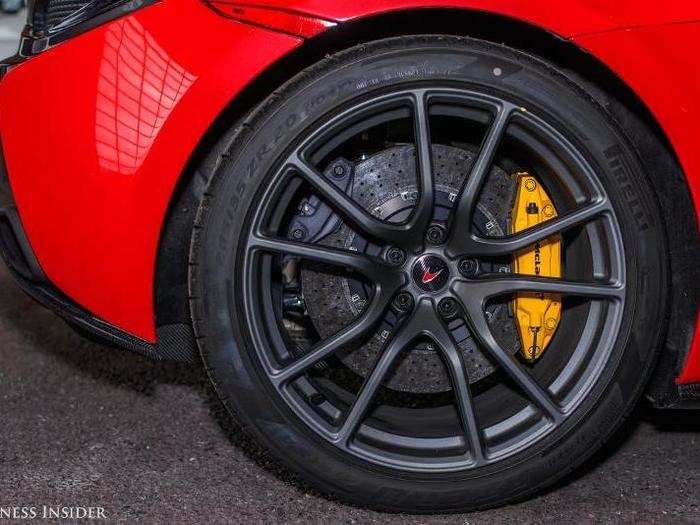
With the 570S, McLaren didn't set out to make the fastest car in the world. Nor did it set out to make the most powerful. Instead, the company decided to give us its interpretation of a modern sports car you can drive every day. The resulting 570S has not only pushed McLaren into new territory, it has moved the whole sports-car genre forward.

Popular Right Now
Popular Keywords
Advertisement